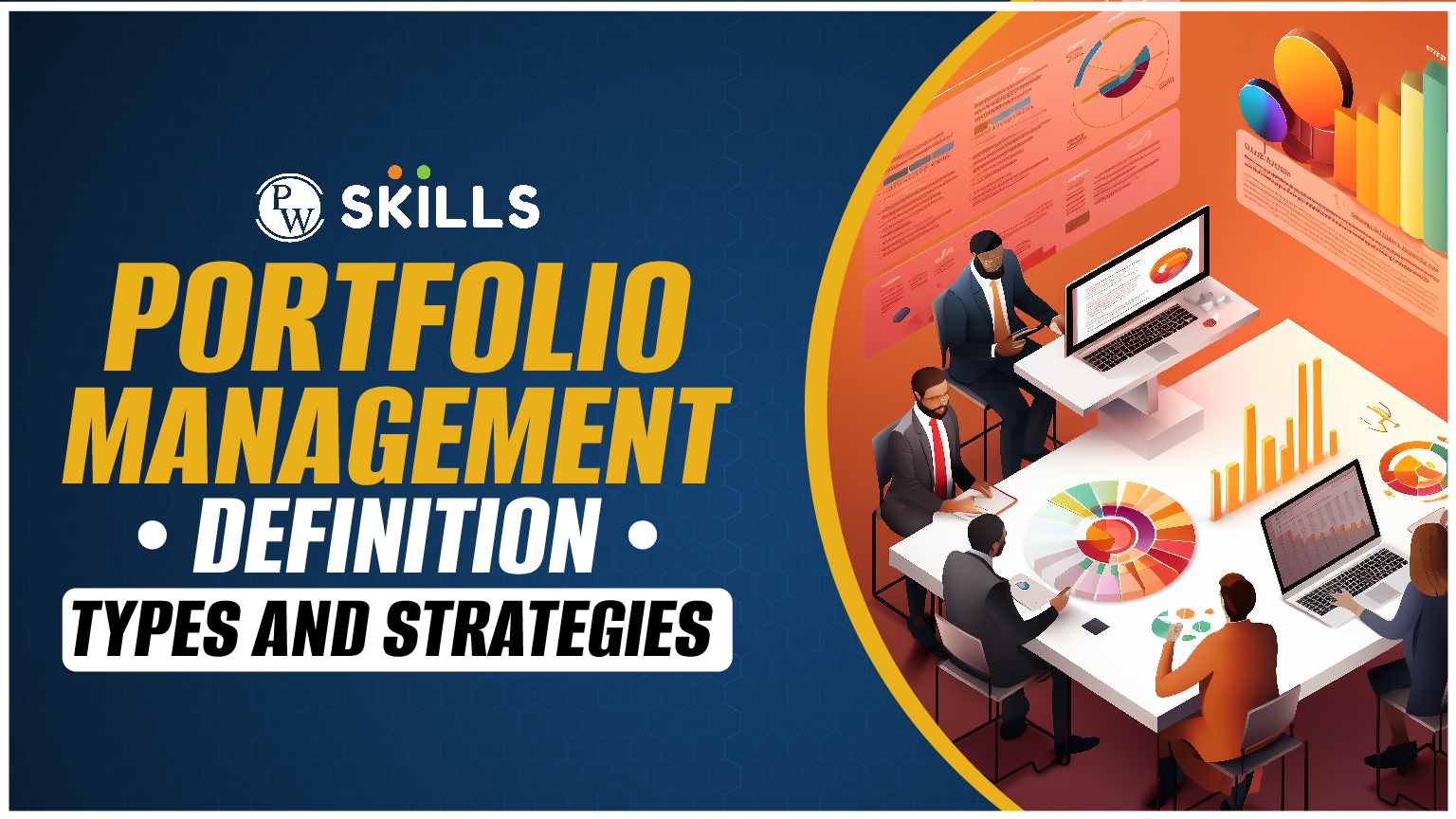Are you an investor in the stock market? Then you might have considered managing your portfolio to reduce risk probability and enhance the profit likelihood. If not yet, you need to understand the significance of portfolio management in the stock market.
If you are a beginner, then you must be familiar with the concept of Portfolio management and its importance before starting with investments in the stock market. In this article, we will learn about portfolio management and important strategies to reduce the risk of huge losses.
What is Portfolio Management?
Portfolio Management is a method of analyzing, selecting, and managing different investment options that meet long-term financial goals and maximize earnings within a given time period. It is the art of investing in different types of investments, such as stocks, bonds, equities, or other securities.

Having a diversified portfolio with investments and assets distributed in a balanced way can help reduce the risk of losses and also provide higher returns. Portfolio management consists of a variety of strategies and tasks to maximize the return of an individual’s investment using asset allocation, risk management, security, and monitoring.
Key Takeaways
- Portfolio management is the art of managing an individual’s investment to maximize returns and reduce the risk of higher losses.
- Active portfolio management, passive portfolio management, discretionary management, and non-discretionary portfolio management are some major types of portfolio management.
- Investors must know their financial goals and risk tolerance to follow a more personalized approach to portfolio management.
- Investment analysis and portfolio management are important to manage risks and maximize returns.
Objectives of Portfolio Management
The major goal of investment portfolio management is to select the best investment options from those available to increase the returns. Let us check out some major objectives of portfolio management.
- Maximize returns: It focuses on maximizing returns and minimizing risks for individual investments.
- Diversification: This is done to spread investments across various asset classes and reduce the risk probability.
- Goals preference: Align the goals of the investors and arrange the portfolio accordingly.
- Overall Proficiency: Active portfolio management can help increase the overall proficiency of investments and chances of higher returns.
- Ensure Flexibility: Through active portfolio management and monitoring, flexibility can be increased and different investment options can be considered to maximize returns.
- Continuous Monitoring: Asset managers continuously monitor different asset investments and replace an asset with other classes when the returns are not favorable.
- Liquidity management: Ensure that the investments generated can be easily converted into cash when needed.
- Tax management: Optimize returns by managing the tax liability loopholes.
Four Major Types of Portfolio Management
Check the various types of portfolio management, their approach, and strategies.
1. Active Portfolio Management
It involves the frequent buying and selling of assets by a team or manager to outperform the market. It is generally performed by skilled asset managers after conducting a thorough analysis of the market, depth research, trend analysis, and more to select an asset class for higher returns.
2. Passive Portfolio Management
It follows the long-term holding of assets to replicate the performance of a specific market with minimal buying or selling and trying to outperform it. It frequently follows index investing and buy-and-hold strategies.
3. Discretionary Portfolio Management
The portfolio manager invests on behalf of the client based on the client’s goals and risk tolerance. Investment decisions can be taken without the client’s consent for every transaction.
4. Non-Discretionary Portfolio Management
The portfolio managers provide crucial advice for managing client portfolios and help them make informative decisions. The final decision rests in the hands of the client.
Major Processes of Effective Portfolio Management
In portfolio management, there are various strategies on which investors or profile managers give major emphasis to build higher returns and reduce risk factors.
- Strategic Asset Allocation: Investors use different strategies after looking at the industry trends and market analysis of both volatile and non-volatile asset classes to optimize returns while managing risk.
- Financial Goal Analysis: Portfolio management must be aligned with the end goal of investors. Whether you are taking the help of an AMC firm or individually handling investment, you must know your financial goals and risk tolerance.
- Diversification: Make sure you diversify your investment across different asset classes to achieve an optimum balance and manage risk.
- Risk management: A diversified portfolio helps manage risks and create a more risk-resilient profile for more rewards. Diversify your portfolio based on different asset classes, such as stocks, bonds equity, mutual funds, etc.
- Enhanced Flexibilities: Portfolio management offers enhanced flexibility where you can easily replace underperforming asset classes and keep your portfolio aligned with market conditions.
What is the need for Investment Analysis and Portfolio Management?
Investment analysis and portfolio management are essential for guiding investors with informed and strategic decisions to minimize risks and provide higher returns. Investors can create a well-diversified portfolio through proper investment analysis based on various conditions and an informed approach to meet their financial goals and needs.

Investors carry out deep analysis on market research, market indicators, company performance, trends, economic conditions and more to make better investment decisions with fewer risk factors. It helps investors identify and diversify their investments in different asset classes to reduce risks and enhance investment opportunities.
It helps investors who do not have the time and expertise to monitor their investments on their own and maximize their profit. Asset management experts provide professional expertise, research and tools to help investors make informative investment decisions.
Major Challenges of Portfolio Management
Portfolio management is a complex task that requires expertise, resources, time and effective strategies to build wealth and minimize risk factors. Check some of the major challenges of portfolio management.
- Diversification Management: Managing and implementing a diversified portfolio is a crucial task. It involves balancing risks based on the understanding of the market and deeper research. The cost of acquiring a diversified portfolio can be much higher.
- Risk assessment: Investors must be well aware of their financial goals, risk tolerance and return expectations to manage risks. There must be a clear picture of their return expectations, as the market may change rapidly. Analyzing risk factors requires continuous monitoring and profound expertise.
- Management Fees: Hiring a manager or Asset Management Company comes with higher fees. The return expectations and firm charges must be balanced to achieve profit at the end and meet financial goals.
- Technological challenges: Changes in algorithms require a shift in the traditional approach and continuous investment in cutting-edge technologies and training to reduce and mitigate cyber threats.
- Regulatory and compliance issues: Adhering to regulations and changes can be cumbersome and non-compliance can lead to penalties and heavy fines. Changes in tax legislation may require adjustments in portfolio management strategies.
Learn Stock Market Basics with PW Skills
Engage in an interactive and quality learning experience with our Stock Market Basics Course. This course will help you provide deeper insights into trading and investing and equip you with the skills required to explore earning opportunities in the financial markets.
The complete course is covered by industry experts who will guide you through crucial concepts of the stock market and help you master concepts like trading terminology, technical analysis, market analysis, IPO, etc. Get a completion certification after completing the course only at pwskills.com.
Portfolio Management FAQs
Q1. What is Portfolio Management?
Ans: Portfolio Management is a method of analyzing, selecting and managing different investment options that meet long-term financial goals and maximize earnings within a given time period.
Q2. What are the three types of portfolio management?
Ans: The three types of portfolio management are active, passive, and discretionary portfolio management.
Q3. What is the importance of portfolio management?
Ans: Portfolio management helps consider past investments and develop new strategies based on current market trends, economic conditions, market indicators, etc. This helps investors make informed decisions based on their financial needs and goals.
Q4. What are the four 4Ps of portfolio management?
Ans: The four Ps of portfolio management are People, Philosophy, Process and performance.

